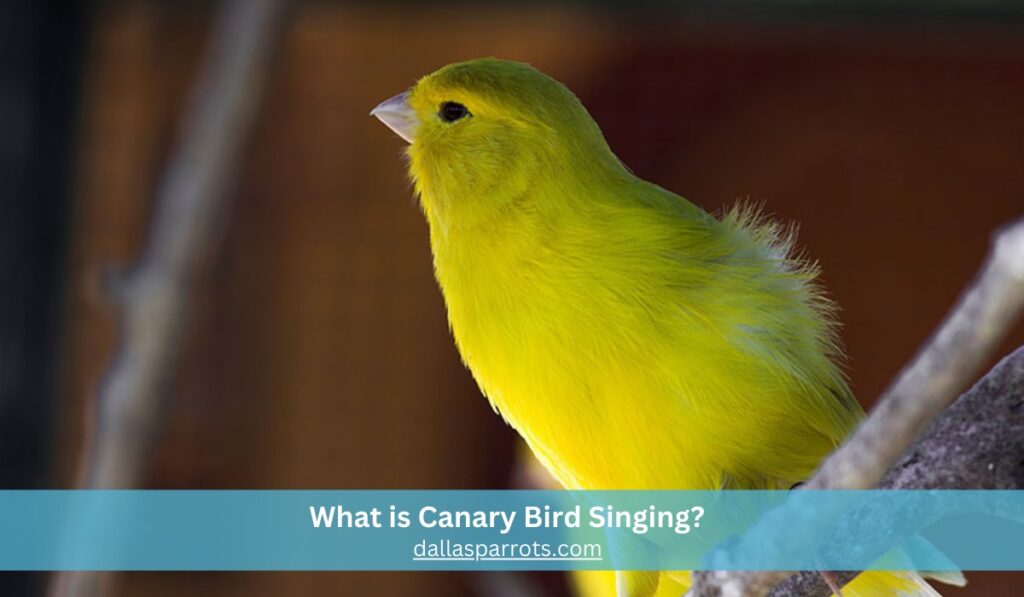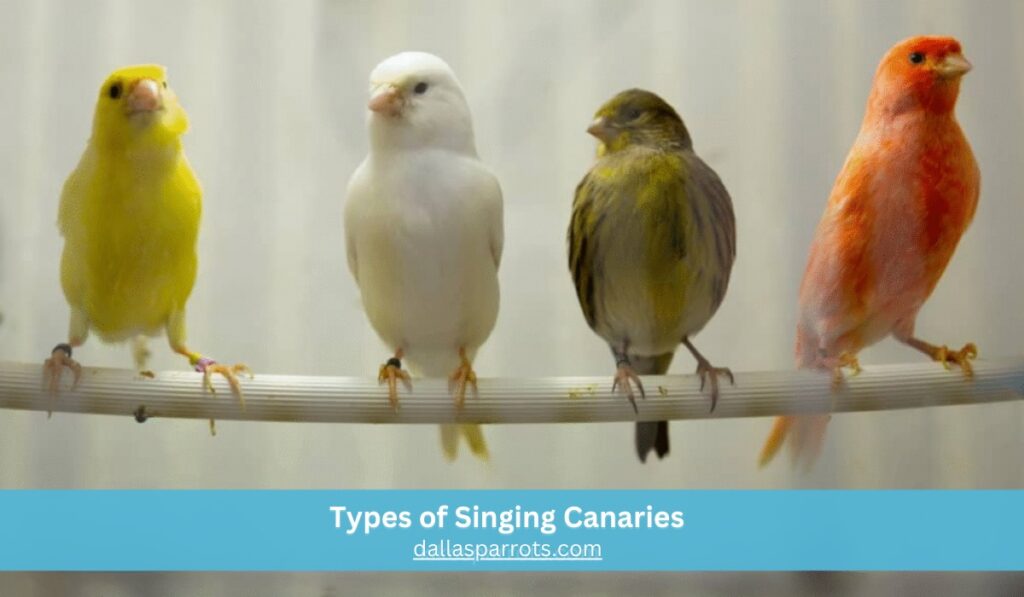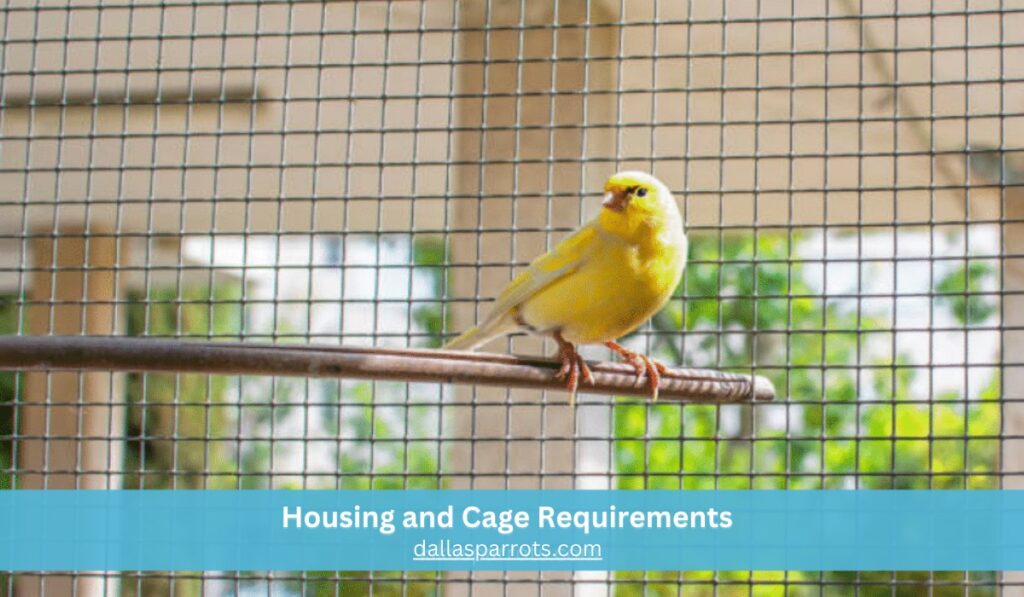

Canary Bird Singing, Lifespan, Prize & Complete Guide
Canary birds, celebrated for their vibrant plumage and enchanting melodies, have captivated bird enthusiasts for centuries. Originating from the Canary Islands, these songbirds have been selectively bred to enhance their vocal prowess, resulting in various breeds known for distinct song patterns and tonal qualities . Their songs, produced using a specialized vocal organ called the syrinx, are not only a testament to their natural abilities but also a source of joy for many bird lovers.
Male canaries are especially known for their rich and intricate songs, which are vital for communication and attracting mates. By delving into the nuances of their vocalizations, owners can better appreciate the rich tapestry of sounds these birds produce, ensuring they provide an environment that nurtures and encourages their canary’s natural singing behavior.
What is Canary Bird Singing?

Canary bird singing refers to the melodious vocalizations produced primarily by male canaries. These birds are renowned for their beautiful, complex songs, which they use to attract mates and mark their territory.
How Canaries Produce Their Melodious Songs
Canaries use a vocal organ called the syrinx, located at the base of their trachea, to produce a wide range of sounds. Unlike humans, the syrinx allows birds to control each side independently, creating layered tones and melodies.
Structure and Patterns of Canary Songs
Canary songs are made up of phrases, trills, chirps, and rolls. Each song has a unique structure and rhythm, often repeated in sequences. Some canaries develop a signature tune, especially if trained.
| Aspect | Innate Singing Behavior | Learned Singing Behavior |
| Definition | Natural ability to sing developed genetically | Song patterns acquired from environment or other birds |
| Influence | Based on species-specific traits and instincts | Shaped by exposure to singing tutors, recordings, or companion canaries |
| Timing | Begins to emerge around 3–4 weeks of age | Refined during the sensitive learning period (around 3–6 months of age) |
| Examples | Basic melodies and rhythmic chirps | Mimicking specific tunes or complex song patterns heard from adult males |
| Importance | Provides a foundation for singing ability | Adds uniqueness and complexity to the canary’s song |
Origin, Natural Habitat, and Conservation Status
Canary birds originated from the Canary Islands, Madeira, and the Azores. They were brought to Europe in the 17th century, where selective breeding led to the many varieties we see today.
Natural Habitats and Geographic Distribution
In the wild, canaries live in semi-arid environments with shrubs and trees. Today, domesticated canaries are bred worldwide but their natural populations are still found on these Atlantic islands.
Conservation Efforts and Status in the Wild
Wild canaries are not considered endangered, but their populations are monitored due to habitat changes. Conservation efforts mainly focus on habitat preservation and responsible breeding practices.
Why They Are Considered Exotic and Rare
Canaries are prized for their striking coloration, vocal abilities, and gentle temperament. Their song distinguishes them from other pet birds.
Rarity in Certain Regions and Breeds
Some breeds, like the Spanish Timbrado or German Roller, are harder to find and thus considered rare in specific regions due to limited breeding.
Cultural Significance and Exotic Appeal
Historically kept by royalty and musicians, canaries have symbolized beauty, freedom, and inspiration in art and literature, enhancing their exotic allure.
Types of Singing Canaries

A hybrid of the Roller and Border canaries, known for a balanced mix of melodic variety and clarity. Ideal for beginners due to their sweet, pleasant tone.
Roller Canary
Originating from Germany, these birds produce soft, low-pitched rolling notes. They are trained to sing with their beaks closed, producing a unique hum-like sound.
Spanish Timbrado Canary
Native to Spain, they have a bold, metallic, and rhythmic song. Their singing is loud, vibrant, and less structured, showcasing natural diversity.
What Makes a Canary Sing
Male canaries sing more frequently and more elaborately to attract females and defend territory. Females may chirp but rarely produce complex songs.
Impact of Age and Maturity
Canaries typically start singing around 3-6 months of age. Their songs mature and become more complex as they age.
Seasonal and Hormonal Influences
Song intensity often increases during the breeding season (spring) when hormone levels are high. Singing may decrease during molting periods.
Environmental Factors That Trigger Singing
A calm environment, proper lighting, and regular routines encourage singing. Background noises, cage location, and nearby birds also play roles.
️ Canary Bird Singing Available at Dallas Parrots!
Dallas Parrots offers a wide range of healthy, vibrant canaries known for their vocal strength and appearance. Birds are ethically bred and raised in optimal environments.
Testimonials and Customer Experiences
Many satisfied customers praise Dallas Parrots for delivering healthy, well-trained canaries with beautiful songs and friendly temperaments.
Contact Information and Purchasing Details
Visit Dallas Parrots or call their customer support for current availability, pricing, and advice on selecting the perfect singing canary.
Recommended Foods and Feeding Tips for Canary Birds
| Food Category | Examples | Benefits / Notes |
| Seeds | Canary seed mix | High energy source, but limit quantity due to high fat content |
| Fruits & Vegetables | Apples, berries, spinach, kale, carrots | Provide hydration and essential vitamins |
| Proteins | Boiled eggs, mealworms | Support muscle growth and improve vocal strength |
| Avoid | Avocado, chocolate, caffeine, alcohol | Toxic to canaries—never feed these items |
| Feeding Tips | – Provide fresh water daily – Use pesticide-free produce – Clean food containers daily |
Ensures hygiene, prevents illness, and keeps birds healthy and active |
Lifespan of a Canary Bird Singing: How Long Do They Live?
Canary birds typically live between 10 to 15 years when provided with proper care, nutrition, and a stress-free environment. In some cases, canaries have been known to live even longer, especially when they are kept indoors in optimal conditions and monitored regularly for health issues.
Factors Influencing Longevity
The longevity of canaries is influenced by several factors. A well-balanced diet rich in essential vitamins and minerals plays a vital role in extending their life. The quality of their environment, including a clean cage, access to sunlight, and minimal exposure to stress, is equally important. Regular health monitoring and prompt treatment of any medical issues also contribute significantly to their overall lifespan.
Tips for Ensuring a Long and Healthy Life
To ensure your canary enjoys a long and healthy life, provide a safe, clean living space with proper ventilation. Maintain a routine feeding schedule using fresh, pesticide-free food and clean water daily. Incorporate natural light or full-spectrum lighting to support their biological rhythm. Lastly, schedule annual checkups with an avian veterinarian to detect and prevent potential health issues early.
Essential Care Tips
Daily care for a canary includes replenishing fresh water, offering a clean supply of food, and observing their activity levels. You should also remove uneaten fruits and vegetables from the cage to prevent spoilage. Routine attention to their living space helps prevent bacteria buildup and promotes a healthy, happy environment for your bird.
Health Monitoring and Common Issues
Canaries are sensitive to their surroundings and may show signs of illness subtly. Common health problems include respiratory infections, feather mites, and vitamin deficiencies. Observing their posture, feather condition, and activity level can help identify early warning signs. A change in singing behavior may also indicate a health issue.
Importance of Regular Veterinary Check-ups
Even if your canary appears healthy, regular veterinary check-ups are essential. An avian vet can perform physical examinations, offer dietary recommendations, and test for any underlying conditions. Preventive care is key to managing long-term health and ensuring your canary lives a full and melodious life.
| Category | Details |
| Price Range (Canary Bird) | $25 to $150 depending on breed and singing ability |
| Cage Cost | $50 to $200 depending on size and design |
| Monthly Food Cost | $10 to $20 for seeds, fruits, vegetables, and supplements |
| Accessories | Toys, perches, and other essentials may cost $10 to $30 initially |
| Veterinary Expenses | Occasional checkups or treatment – plan for $50 to $100 annually |
| Monthly Maintenance Budget | Recommended: $20 to $30 for food, cleaning, and minor needs |
Housing and Cage Requirements

A canary requires a spacious cage to stretch its wings and fly short distances. The recommended minimum cage size is 24 inches in width. A wider cage is better than a tall one, as it allows for more natural movement and flight. Bar spacing should be narrow to prevent escape or injury.
Placement of Perches, Feeders, and Toys
Perches should be placed at varying heights and made from different materials to support foot health. Food and water containers should be positioned away from perches to prevent contamination. Toys such as bells, swings, and mirrors provide mental stimulation and encourage physical activity, which are both essential for a canary’s well-being.
Cleaning and Maintenance Guidelines
To maintain hygiene, clean the cage bottom and replace bedding regularly. Food and water containers should be washed daily. Weekly deep cleaning of the entire cage helps prevent the buildup of harmful bacteria and ensures a healthy environment for your canary.
Training and Socialization
Although canaries are not typically hand-tamed like parrots, gentle interaction can foster trust. Spend time near the cage, speak softly, and allow the bird to become familiar with your presence. Over time, consistent and calm interaction can lead to a more social and confident bird.
Canary Behavior and Social Needs
Canaries are generally solitary birds and may not enjoy being housed with others. However, they are highly vocal and enjoy auditory interaction with other birds. Recognizing their body language, such as tail bobbing or feather fluffing, helps you understand their mood and comfort level.
Canary Bird Singing For Sale
When looking to buy a canary, it’s important to purchase from reputable breeders or well-reviewed pet stores. These sources usually provide health guarantees and may offer birds that are already partially trained or accustomed to human interaction.
What to Look for When Buying a Canary Bird
Select a bird that appears active, alert, and curious. Healthy feathers, clear eyes, and consistent vocalizations are signs of a well-kept canary. Observing the bird’s behavior before purchasing can give you an idea of its health and temperament.
Legal Considerations and Certifications
In some regions, specific types of canaries may be regulated. It is important to ensure that the breeder complies with local animal welfare laws and provides any necessary documentation or health certifications for the bird.
Fun Facts About Canary Bird Singing
Canaries have been celebrated in various forms of art and literature. Their melodious songs have inspired musical compositions and symbolized happiness and peace. They are often featured in paintings and poetry as representations of beauty and freedom.
Canaries in Coal Mines: Historical Context
Historically, canaries played a critical role in coal mining. Miners used them as early warning systems for toxic gases. A sudden silence or the collapse of the canary would signal danger, allowing miners to evacuate before exposure to hazardous conditions.
Surprising Behaviors and Lesser-Known Trivia
Canaries can develop unique song patterns, sometimes mimicking sounds they frequently hear. They undergo a molting period once a year during which they usually stop singing. Despite being small, they are intelligent and responsive to changes in their environment, showing preferences for specific songs or routines.
Conclusion
Canary bird singing is not only a beautiful and soothing trait but also a vital part of their behavior and communication. Understanding how to care for and train these remarkable birds can lead to a rewarding experience for any bird enthusiast. From providing the right environment and diet to utilizing training techniques for song enhancement, the insights shared can help canary owners enjoy the delightful melodies of their feathered friends. Whether you’re purchasing a canary for companionship or as a singing companion, remember to appreciate their vocal talents and care for them responsibly. Canary bird singing is a captivating experience that can bring joy and beauty into any home.
Follow our Social Media Pages Facebook and Instagram.
FAQ’s
Can a Canary Bird Sing?
Yes, canaries are renowned for their singing abilities. Male canaries, in particular, sing to attract mates and to establish their territory. Their songs are melodious and can vary from simple chirps to complex tunes, depending on the breed.
Do Canaries Sing When They Are Happy?
Yes, canaries often sing when they are content or happy. Singing is a way for them to express their well-being and communicate with their environment. A canary that feels safe, comfortable, and well-cared for will likely sing more often.
What Does the Term "Singing Like a Canary" Mean?
The expression “singing like a canary” refers to someone who sings beautifully or with a pure, clear voice. It can also imply someone who is openly speaking or confessing, as canaries are known for their loud, clear vocalizations.
What Bird is Known for Singing?
The canary is one of the most famous birds known for its singing. Other birds that are also famous for their singing include nightingales, mockingbirds, and robins. Each of these species is celebrated for its unique and melodious songs.
Is a Singing Bird a Happy Bird?
Not necessarily. While singing can indicate that a bird is happy and comfortable, it can also serve other purposes, such as marking territory, attracting a mate, or defending their space. However, a lack of singing may indicate that the bird is stressed, ill, or unhappy.
What Time Do Canaries Sing?
Canaries tend to sing most frequently during the early morning hours, especially at dawn, when they are most active. They may also sing throughout the day, particularly during the breeding season or when they are feeling content.
Why Does a Canary Stop Singing?
A canary may stop singing due to various reasons, such as stress, illness, or changes in their environment. Lack of social interaction, inadequate lighting, or a poor diet can also contribute to a decrease in singing. If a canary stops singing, it’s important to monitor their health and environment closely.
Do Birds Love to Sing?
While not all birds sing for the same reasons, many birds do enjoy singing as a form of communication or expression. Singing can be a way to communicate with other birds, express joy, or even to attract mates. Some birds, like canaries, enjoy singing so much that they do it frequently.
Are Canary Birds Friendly?
Canary birds are generally not very interactive with humans in terms of handling, but they are friendly in the sense that they enjoy being around people and may sing happily in response to human presence. They tend to be more social with other canaries or birds of their species.
What Makes a Bird Sing?
A bird sings for various reasons, including attracting a mate, marking territory, or simply expressing happiness or excitement. Environmental factors, hormonal changes, and social interactions can all influence a bird’s singing behavior. Singing is also often a way for birds to communicate with others in their species.


